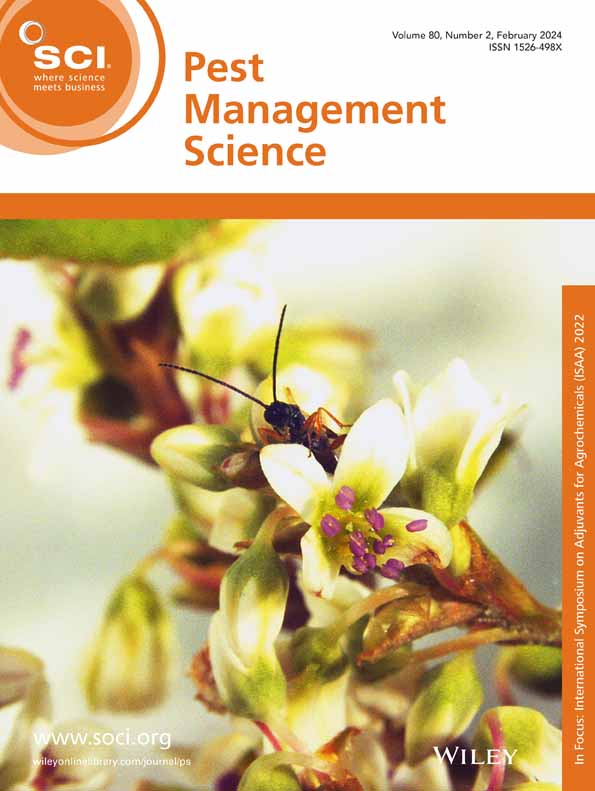Testing an integrated approach for managing roof rats in citrus orchards
IF 3.8
1区 农林科学
Q1 AGRONOMY
引用次数: 0
Abstract
BackgroundRoof rats (柑橘园顶鼠综合治理方法试验
背景屋顶鼠(Rattus rattus)是柑橘作物中的一种主要害虫,但人们对管理这种啮齿类动物的有效、成本效益高的策略知之甚少。因此,我们制定了两个害虫综合治理(IPM)计划,其中包括高架诱饵站(内含经二氟苯丙酮处理的燕麦)和诱捕,并将这些计划与仅使用诱饵站的方法进行了比较,以确定哪种策略对柑橘园中屋顶鼠的治理最为实用。然而,我们最初采用的综合虫害综合治理方法结合使用了诱饵、快速捕鼠器和 Goodnature® A24 捕鼠器,但未能成功阻止老鼠的快速繁殖。第二种虫害综合防治策略依靠投放诱饵和更广泛的快速诱捕,有效地减少了老鼠的活动,并可能在 6 个月的防治期之后仍有效。虽然投饵本身的成本低于 IPM 地块,但在长期管理计划中,投饵与仅使用投饵和快速诱捕的 IPM 方法之间的成本差异应该很小。© 2025 作者简介害虫管理科学》由 John Wiley & Sons Ltd 代表化学工业协会出版。本文由美国政府雇员撰写,其作品在美国属于公共领域。
本文章由计算机程序翻译,如有差异,请以英文原文为准。
求助全文
约1分钟内获得全文
求助全文
来源期刊

Pest Management Science
农林科学-昆虫学
CiteScore
7.90
自引率
9.80%
发文量
553
审稿时长
4.8 months
期刊介绍:
Pest Management Science is the international journal of research and development in crop protection and pest control. Since its launch in 1970, the journal has become the premier forum for papers on the discovery, application, and impact on the environment of products and strategies designed for pest management.
Published for SCI by John Wiley & Sons Ltd.
 求助内容:
求助内容: 应助结果提醒方式:
应助结果提醒方式:


